The Elven Gods
Aerdrie Faenya
Angharradh
Avachel
Corellon Larethian
Deep Sashelas
Erevan Ilesere
Fenmarel Mestarine
Hanali Celanil
Khalreshaar
Labelas Enoreth
Lashrael
Felarathael
Rillifane Rallathil
Sehanine Moonbow
Shevarash
Solonor Thelandira
The Pantheon
The Fair folk of the Realms worship a pantheon of deities known as the Seldarine, a complex term that can be roughly translated as the fellowship of brothers and sisters of the wood, implying the wide diversity in interests that exists amongst the gods of the elven pantheon and their desire for cooperation. They act independently of one another, but the elven powers are drawn together by love, curiosity, and friendship to combine their strengths, to accomplish a task, or in the face of outside threats. Corellon Larethian, the acknowledged ruler of the Seldarine-sometimes joined by his consort, who is either identified as Sehanine or Angharradh-reinforces this freedom of action and compels none of the Seldarine to perform any task. Instead, the gods of the elven pantheon seem to sense when something needs doing, and they simply gather when necessary. With the exception of Fenmarel Mestarine, the Seldarine reside in the realm of Arvandor-a term that means the high forest in elvish-on the plane of Arborea on the layer known as Olympus.
Relations ascribed to the various powers of the Seldarine vary widely from culture to culture; some legends hold them all to be brothers and sisters, others believe Corellon (and sometimes Sehanine or Angharradh) created the other powers from the natural environment of Arvandor. Other sages link the Seldarine in various romantic relationships. In most representations, the elven pantheon includes more gods than goddesses, but every member of the Seldarine can appear as either male or female. The androgynous nature of the Seldarine reflects the gender equality found in most elven societies.
Aside from the disagreement over the nature of Angharradh, there is general agreement among the elves of Faerūn as to which powers make up the Seldarine. Each elven realm and subrace places its own emphasis on the relative importance of various powers to the point where some members of the Seldarine fade from memory in some isolated elven cultures.
Formal membership in the Seldarine is determined by Corellon (or by Corellon and Angharradh, according to some myths). Unlike the dwarves, who still count Laduguer as a member of the Morndinisamman despite his banishment by Moradin, the Fair Folk do not include banished members of the elven pantheon when they use the term Seldarine. The good and neutral elven gods, including Corellon, Angharradh, Aerdrie Faenya, Deep Sashelas, Erevan Ilesere, Fenmarel Mestarine, Hanali Celanil, Labelas Enoreth, Rillifane Rallathil, Sehanine Moonbow, Shevarash, and Solonor Thelandira, have always members of the Seldarine in good standing, although Fenmarel has withdrawn from active involvement in the pantheon. Many of the drow powers, including Araushnee (now Lolth), Eilistraee, and Vhaeraun, were once considered part of the Seldarine. They were exiled from Arvandor by Corellon's decree following an invasion of Arvandor by the Anti-Seldarine, a coalition of evil gods assembled by the traitorous Araushnee and her complicitous son. Of the drow pantheon, only Eilistraee might someday formally rejoin the Seldarine, but it is more likely she will simply remain a close ally of the pantheon to which she once belonged. The Dark Maiden did not intentionally participate in Araushnee's schemes, but she willingly accepted banishment nonetheless, foreseeing the day her role as an outsider would be needed to guide those drow who spurned the self-destructive dogma of the Spider Queen.
The Seldarine are closely linked with the gods of the Seelie Court and other Sylvan deities, and the Fair Folk often include prayers to other faerie powers when worshipping the Seldarine. All faiths that venerate one or more members of the Seldarine practice tolerance for followers of the other elven gods as well as for religions of closely allied nature (the cult of Skerrit the Forester being a prime example). The Seelie Court is more or less assumed to include the deities of the sprites, sea sprites, pixies, nixies, atomies, grigs, satyrs, korred, nymphs, brownies, leprechauns, dryads (and hamadryads), unicorns, pegasi, centaurs, swanmays, killmoulis, treants, pseudodragons and faerie dragons, seelie faeries faerie fiddlers, and gorse faeries. It is ruled by Titania and Oberon, and certain of the previously listed creatures are considered more tightly a part of the court than others. (The enemy of the Seelie Court is the Un-seelie Court, ruled by the Queen of Air and Darkness, who is served by unseelie faeries, quicklings, and bramble faeries, among others.) While such powers have close ties to the elves, they are not counted as part of the Seldarine.
While the gods of the elven pantheon are actively involved in the collective lives of their worshipers, few intervene directly in events affecting a particular individual or even a small group of elves. Like the Fair Folk, the Seldarine tend to have very long-range perspectives, and they never intervene directly in the unfolding history of the Realms without a great deal of consideration and discussion. Notable instances of intervention by the Seldarine have resulted in the creation and settlement of Evermeet, the Descent of the drow, the decision to summon representatives of the elves to the Elven Court of Cormathyr, the founding of Myth Drannor under the guiding principles it embodied, the creation of the Harpers, the initiation of the Retreat that began in the Year of Moonfall (1344 DR), and the defence of Evermeet in the Year of the Unstrung Harp (1371 DR).
Elven mythology holds that the Fair Folk were born of the blood that Corellon shed in his battles with Gruumsh and bathed in the tears of Sehanine (or Angharradh). (Most members of the pantheon have an enmity for or at least a dislike of the goblinkin pantheons: those of the orcs, goblins, hobgoblins, bugbears, kobolds, and urds.) Some legends state that the first elves appeared in the Realms fully formed and shaped in Corellon's image, woven by magic from sunbeams, moonbeams, forests, clouds, seas, and shadows. Other myths claim that at least some of the elven subraces-the gold elves and moon elves, in particular-migrated to Abeir-Toril through magical gates from one or more other worlds, most commonly identified as "Faerie." Myths discussing the natural origins of the Fair Folk are closely tied to the ability of many members of the Seldarine to assume nonelven, natural forms far greater in size than is common for their avatars. For example, Rillifane Rallathil has appeared as a massive oak tree, Deep Sashelas has appeared as a giant, towering (vaguely humaniform) wave of seawater, Aerdrie Faenya has appeared as a white cloud, and Corellon Larethian has appeared as an azure crescent moon or star.
One is struck in elven theology by the close relationships between the fair Folk, magic, and the natural world. Most of elven faiths emphasize elven unity with life and nature, and they tend to blend the distinction between elves and their environment, much as the Seldarine are held to be spirits of Arvandor. For example, the Fair Folk have spirits, not souls, and many elves believe they will be reincarnated as animals, plants, faerie folk, or even elves once again. Similarly, elves are creatures of the Weave, tightly bound to and part of the web of magic that envelops Abeir-Toril.
The Fair Folk refer to themselves as Tel'Quessir, an elvish term meaning the people. They refer to all other beings as N'Tel'Quess, a less-than-diplomatic elvish expression meaning not-people. The Tel'Quessir originally included seven known subraces of elves, each of which is believed to have appeared in the Realms over 25 millennia ago and all of which have interbred with humans to form Na'N'Tel'Quess, almost-not-people (half-elves).
The diversity of the elven pantheon reflects the wide range of elven subraces, for each subrace is closely associated with a subset of the Seldarine and each elven power is closely associated with one or more of the subraces. In particular, Corellon Larethian, Hanali Celanil, and Labelas Enoreth are closely associated with they Ar-Tel'Quessir and Hanali Celanil, Sehanine Moonbow (or Angharradh), and Solonor Thelandira are closely associated with the Teu-Tel'Quessir. Similarly, Rillifane Rallathil, Shevarash, and Solonor Thelandira are closely associated with both the Sy-Tel'Quessir and (with the exception of Shevarash) the Ly-Tel'Quessir, while Deep Sashelas is closely associated with the Alu-Tel'Quessir. Before the Descent, the Ssri-Tel'Quessir (now dhaeraow, drow) were closely associated with Araushnee (now Lolth), Eilistraee, and Vhaeraun, a relationship that still exists between the drow and the dark gods they worship. The deep schism between the drow and the other elven subraces is also reflected in the divisions between the Seldarine and Araushnee and her brood, just as the deific battles between the Seldarine and the anti-Seldarine reflect the strife of the Crown Wars.
By some measures, the Seldarine contain a pantheon within a pantheon. In centuries past, before the Cha-Tel'Quessir (half-green elves of the Yuirwood) appeared in Aglarond, the Sy-Tel'Quessir of the Yuirwood adopted and co-opted ancient powers previously venerated by primitive humans who had preceded even the elven settlement of the forest. Little remains to mark the worship of these ancient powers, although their legends are still retold in the oral tradition of the Cha-Tel'Quessir. At the heart of the Yuirwood is the Sunglade, dominated by two concentric rings of stone menhirs. While each stone of the outer rings bears an inscription to a different member of the Seldarine, each stone of the inner ring is inscribed with the symbol of one of the gods of the Yuir. Of those ten stones, only four symbols are still legible: Relkath of the Infinite Branches, Magnar the Bear, Elikarashae, and Zandilar the Dancer. A fifth menhir is believed to have once held the sign of the Simbul, the goddess of the edge and the moment of choice, from whom Alassra Shentrantra's common appellation is derived. All but one of the gods of the Yuir, weakened by the long absence of their faithful, were absorbed by he Seldarine when the Fair Folk first arrived in the Yuirwood, and they are now simply wild, primitive aspects of Rillifane Rallathil, Shevarash, Labelas Enoreth, and the other elven powers. Only Zandilar the Dancer retained any degree of independence after the coming of the Sy-Tel'Quessir. However she too declined in power and was forced to merge with the Mulhorandi goddess Bast (now known as Sharess) after an unsuccessful gambit against Vhaeraun the Masked Lord that she initiated in the hope of averting the defeat of her adopted worshipers by the drow.
Extract from Demihuman Deities © 1998 Wizards of the coast
The Powers
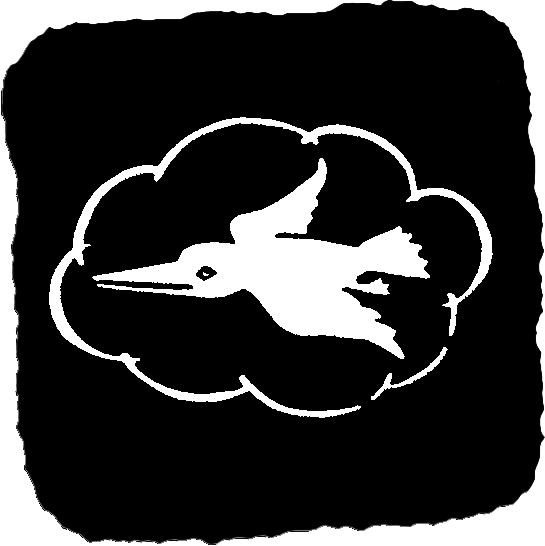
Aerdrie Faenya
(The winged Mother, Lady of Air and Wind, Queen of the Avariel, She of the Azure Plumage, Bringer of Rain and Storms)
Aerdrie Faenya (AIR-dree FAH-ane-yuh) is the elven goddess of the air, weather, and birds. As the bringer of rain, she is the closest the Fair Folk have to a fertility goddess. At one time, the Winged Mother's followers were composed largely of the avariel, much like Deep Sashela was and is worshiped primarily by sea elves. However, unlike their aquatic kin, the winged elves were nearly wiped out by the dragons before the First Flowering, and what was beieved to be the last of their race in Faerûn flew westward before the start of the Crown Wars. Today, gold, moon, and wild elves who desire certain weather conditions make the most frequent sacrafices to Aerdrie. Her small church is also popular with elves who possesss flying mounts, such as asperii, dragons, giant eagles, griffons, hippogriffs, and pegasi. The Lady of Air and Wind is revered by all nonevil birds, particularly aarakocra and other sentient avians, but their numbers are small and declining as well. She is also called on by other elves oppressed by overly lawful creatures.
Aerdrie is both an aspect of Angharradh and one of the three elven goddesses--the other two being Hanal Celanil and Sehanine Moonbow--who collectively form the Triune Goddess. This duality tightly binds Aerdrie with the two other senior elven goddesses, and the three collectively serve alongside Corellon in leading the Seldarine. Aerdrie maintains close relations only with those powers of air who share a love of birds and freedom as deply held as the Lady of Air and Wind. Aerdrie is particularly close with Syranita, the gentle goddess of the aarakocra, and some theologians speculate the two may eventually merge if the bird-men continue their steady decline. Aerdrie is also close with the avian lords of the Beastlands, particularly the hawk lord. Since the Time of Troubles, Aerdrie has been romantically linked with her long-time ally, the human god Shaundakul, the Rider of the Winds, but this new twist in their relationship is undoubtedly little more than a passing fancy, at least on the Winged Mother's part. Aerdrie contests with Talos and the Gods of Fury, for they challenge her control of the winds and seek to wield them for purely destructive purposes. The deep antipathy between the Winged Mother and the Frostmaiden stems from the war in Arvandor between the Seldarine and the anti-Seldarine forces who were arrayed against them. Aerdrie soundly defeated Auril in that battle, forever banishing the Frostmaiden from Olympus, and the two goddesses continue their eternal war on the myriad worlds of the Prime.
Aerdrie is the elven expression of freedom and impulse, and she dislikes being tied down to any one place for too long. Her realm is so close to the philosophical border between Arborea and Ysgard that it moves back and forth, sometimes part of Arvandor and sometimes part of Alfheim. Aerdrie delights in the sound of wind instruments and in creating unpredictable atmospheric conditions, but her primary joy is simply feeling the air rush past her with the ground far below. The Winged Mother is a somewhat distant goddess who rarely involves herself in elven culture, and she is far more chaotic than the rest of the Seldarine. Of all the elven races, only Aerdrie takes a keen interest in the avariel, and few of them remain in the Realms.
Back to Top
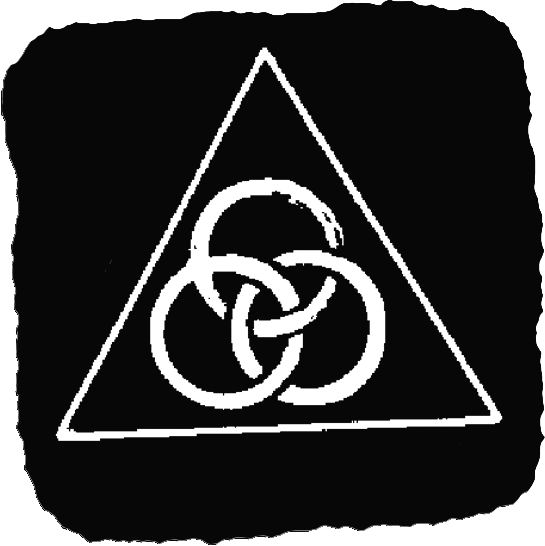
Angharradh
(The Triune Goddess, the One and the Three, the Union of the Three, Queen of Arvandor)
Angharradh (ON-gahr-rath) is the face of the power who is both three seperate goddesses--Aerdrie Faenya, Hanali Celanil, and Sehanine Moonbow who are collectively known as the Three--as well as a single goddess--the One--who subsumes their seperate aspects. The Triune Goddess presents many different faces, depending upon circumstances. In spring and during harvest time she is a fertility goddess. She watches over the planting of crops, blesses births, and keeps the land green and growing. In wartime she is a grim warrior deity who weilds a red sword and mercilessly slays the enemies of the elves. When wisdom is required , the One and the Three is a source of guidance and council. Among the Fair Folk, Angharradh is worshiped nearly exclusively by moon elves ad a handful of half-moon elves. The other elven subraces worship Angharradh's aspects as sepperate goddesses, but they rarely give homage to the Union of the Three. Whether Angharradh is truely a combination of the three goddesses or a seperate deity in her own right actually lies in the hearts of her individual worshipers.
According to silver elven mythology, Angharradh was born from the essence of the three greatest goddesses of the Seldarine before the first of the Fair Folk walked the forests of Faerûn. The Triune Goddess arose in the aftermath of a great battle between the Seldarine and the anti-Seldarine, a host of evil powers who had invaded Arvandor at the bequest of Araushnee (now Lolth), Corellon's traitorous consort. When an arrow launched by Eilistraee at an onrushing orcish god was subtly warped by the magic of the treacherous Araushnee and felled the Protector instead, Aerdrie struck down the Dark Maiden in revenge. The Seldarine assumed the unconcious daughter of Araushnee and Corellon was to blame for her father's collapse. Sehanine's timely escape from Vhaeraun's prison allowed the Goddess of Moonlight to expose Araushnee's crimes and the Masked Lord's complicity, but the Weaver of Destiny defiantly rejected the collective authority of the assembled Seldarine to convene a council to investigate her actions. In response, Aerdrie, Hanali, and Sehanine drew together and merged into a luminous cloud before coalescing in the form of the Triune Goddess. Angharradh then restored Corellon to health, taking her place by the protector's side and declaring her intention to prevent treachery from ever enterng the heart of a goddess of Arvandor again.
As the consort of Corellon and co-ruler of the Seldarine, Angharradh is on excellent terms with the other members of the elven pantheon. The Triune Goddess has a strong, motherly interest in both Eilistraee and Mielikki, and, more so than Corellon, maintains strong ties with the paramount goddesses of other human and demihuman pantheons. Angharradh strongly opposes the destructive efforts of Talos and the Gods of Fury (particularly Malar, for it was the Beastlord who unleashed the Elf-Eater on Evermeet in the Year of the Unstrung Harp (1371 DR)). The Triune Goddess reserves her strongest hatred for Lolth, as the Spider Queen has never ceased her efforts to undemine Corellon or to destroy his progeny, the Fair Folk.
As the One and the Three, Angharradh is both three distinct goddesses and a goddess in her own right. While some Teu-Tel'Quessir assume that the aspect of Sehanine is Angharradh's primary facet--a point of confusion due in part to the belief by other subraces of the Fair Folk that Sehanine, not Aerdrie or Hanali, is Corellon's consort--in truth all three goddesses are equal and each reflects the duality that is their individual nature and that of the Triune Goddess. As such, Angharradh's nature reflects the personality traits of each of the Three, including the impulsive and whimsical nature of the Winged Mother, the romantic and affectionate nature of the Heart of Gold, and the serene and ephemeral nature of the Daughter of the Night Skies. The fusion of the Three was born of Araushnee's betrayal and the collective threat to Arvandor and the Seldarine. As such, the Triune Goddess exhibits the fierce protectivenesss and unbending resolve of the Queen of Arvandor.
Back to Top
Avachel
Avachel is the male aspect of the draconic goddess Hlal (also known as Aaterinian) who is venerated by the Fair Folk as the boon companion of Erevan Ilesere. Although Quicksilver, as Avachel is commonly titled, is in some respects an interloper power of the elven pantheon, he is more commonly and correctly seen as an ally of the Seldarine. In some elven myths, Avachel is said to have been a great mercury wyrm who underwent apotheosis after sacraficing himself to fdefeat an invasion by evil humans who threatened a band of green elves. Othe legends speak of an avatar of Hlal in the guise of a moral mercury dragon who joins with the Trickster in a similar series of events. Reguardless of the truth behind his ascension, Avachel is nearly Erevan's equal in his ability to get into trouble, but he is a tireless defender of the Fair Folk, particularly green elves. Quicksilver is a good-natured, impulsive deity, with a fondness for dispatching avatars to Evermeet and the other woodlands of Toril in the guise of a silver or green elf armed only with an enchanted staff that requires all who are hit by it to fall into a deep slumber, or in the guise of a great mercury wyrm.
Back to Top
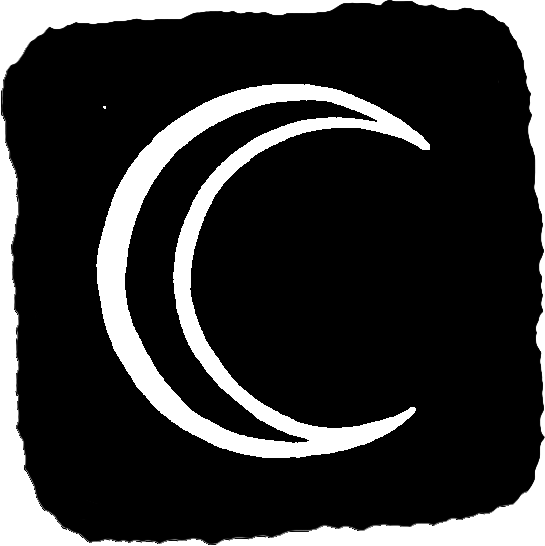
Corellon Larethian
(Creator of the Elves, the Protector, First of the Seldarine, Protector and Preserver of Life, Ruler of All Elves, Coronal of Arvandor)
The leader of the elven pantheon, Corellon Larethian (CORE-eh-lon Lah-RETH-ee-yan), is said to have given birth to the entire elven race, although sometimes Sehanine (or Angharradh) is given credit as well. Elven lore states that the Fair Folk sprang from drops of blood Corellon shed in epic battles with Gruumsh mingled with Sehanine's (or Angharradh's) tears. The Creator of the Elves embodies the highest ideals of elvenkind, and he is the patron of most aesthetic endevors, including art, magic, music, poetry, and warfare. He is venerated by all the Fair Folk, except the drow and those who have turned to Lolth, Ghaunadaur, Vhaeraun, and the dark powers. Corellon is especially popular with elf and half-elf mages, musicians, and poets.
As ruler of the Seldarine, Corellon has a strong relationship with almost all of the other elven powers, including Eilistraee, his daughter by Araushnee (Lolth), whom he reluctantly banished from Arvandor along with her mother at the Dark Maiden's insistence. Either Sehanine or Angharradh is now said to be Corellon's consort, depending on the subrace of the speaker, and the Protector works closely with the Goddess of Moonlight and the Triune Goddess in their dual aspects. Only Fenmarel Mestarine is somewhat estranged from the Coronal of Arvandor, and th Lone Wolf's differences with Corellon are not all that great. The Creator of the Elves has forged strong alliances with the leaders of the other demihuman pantheons in the face of the seemingly endless waves of human expansion and the ever-present threat of the monstrous populations and their dark powers, as well as with the good- and neutral-aligned powers of the humans. The Protector works closely with Mystra, the Mother of All Magic. Whereas the Lady of Mysteries governs the Weave, Corellon oversees elven magic, particularly elven High Magic, and the intimate connections between the Fair Folk and the mantle of magic that envelopes the world. Corellon's epic battle with Gruumsh One-Eye, leader of the orc pantheon, is legendary, and the pair of pantheistic patriarchs have never reached a lasting truce in their never-ending battle over territory. Malar's relentless attacks of the Seldarine and the Fair Folk have likewise earned him corellon's eternal emnity. The rift between Corellon and his former lover Araushnee, now known as Lolth, is still as bitter as the day he banished the Spider Queen to the Abyss and named her tanar'ri. The Protector's rift with his errant son Vhaeraun is nearly as deep, and the Protector has despaired of the Masked Lord ever repenting his evil ways. In his diligent defense of elves and their homelands, Corellon has earned the emnity of countless powers whose worshipers seek to seize the forests, magic, or wealth of the Fair Folk.
Corellon is a powerful warrior god whose hands protect his creations wth the gentleness of a sculptor and the unspeakable power of a master swordswinger. While other deities may reflect the joy, delights, and accomplishments of the Fair Folk, Corellon stands as an ever-vigilant watcher over them. His life spirit flows from and into the elves and their lands, and while mortal elves daydream and enter the reverie, Corellon never abandons his watchfulness. Only when it is time for the Fair Folk to pass from Faerûn to Arvandor does he finally cease watching over each elf and allows Sehanine to take a larger role in caring for them. Corellon frequently wanders the elven lands and borders in disguise (often in the form of one of the diminutive sylvan race), observing the actions of priests and craftsfolk and defending elven homelands from interlopers. Though his martial might is swift and terrible, the soft-spoken Creator of the Elves is ever humble and always open to learning something new, one of his sources of might. He enjoys discovering new philosophies of thought and new methods of action, even from mortals, and he has a keen interest in other cultures.
Corellon's primary servitors are identical twin spirits, Lashrael and Felarathael. Held by some of the Fair Folk, particularly gold elves, to be demipowers in their own right, Corellon's messengers are solars who resemble tall, shining, androgynous elves clad in gleaming white robes. They are most often seen delivering messages for the Protector in the Realms, and they are also dispatched to defend elves if they are threatened. The two have distinctive personalities, however. Lashrael is given to emotional extreams. When delivering a message, Lashrael speaks with great conviction, and depending upon the message, enormous joy or sorrow. In battle, Lashrael is ferocious, neither asking nor giving quarter. Felarathael, on the other hand, is the very image of rational detachment, treating all situations with logic and calm reason. Felarathael always speaks in a slow, measured, but immensely reassuring voice, and fights with unhurried skill. When Lashrael or Felarathael strike a victim in combat, they may choose to inflict one of the following effects in leiu of damage: the victim is forced into a magical slumber, randomly teleported upto ten miles distant, polymorphed into a woodland creature, or suffers from amnesia.
Back to Top

Deep Sashelas
(Lord of the Undersea, the Dolphin Prince, the Knowledgeable One, Sailor's Friend, the Creator)
Deep Sashelas (DEEP SA-sheh-lahs) is the Lord of the Undersea and the patron of sea elves, whom he created long ago by modifying Corellon's land-bound creations. Sashelas is a powerfully creative deity who is forever changing the environments below the sea, creating islands and reefs by altering the continental rifts, tinkering with undersea volcanoes, and the like. He is said said to create the deep undersea caverns that the sea elves can use for air-breathing when they wish. Sashelas is also known as the Knowledgeable One, for he provides advice as to where food can be found or the enemies are hidden. The sea elves also claim that Deep Sashelas is the auther of the Chambeeleon, a resplendent spell tome held in the royal vaults of Thunderfoam an age ago but since lost. Followers of other aquatic gods make similar claims.
Deep Sashelas is a member of the Seldarine and remains on good terms with the other elven deities, but he directs most of his efforts towards maintaining an alliance of nonhuman sea powers known as the asathalfinare. While he does not explicitly lead the group, the Lord of the Undersea occupies a pivotal role and mediates many potential conflicts and disagreements. Other members of the asathalfinare include Trishina, the dolphin goddess (who is Sashelas's consort), Surminare, goddess of the selkies, Syranita, goddess of the aarakocra (whose membership is somewhat of an anomoly), Persana, god of the tritons, Eadro, leader of the merfolk and locathah, and the enigmatic Water Lion.
The Lord of the Undersea opposes the machinations of all evil powers of the seas, including Abyssal lords such as Demogorgon and Dagon, as well as those whose followers long ago retreated to the underdark, such as Blibdoolpoolp. Sashelas has a special emnity for Sekolah the Great Shark, the sahuagin god, and for Panzuriel the Enslaver, a dark power worshiped by kraken and other sentient, evil denizens of the ocean depths. The Lord of the Undersea helped banish and weaken Panzuriel long ago. Sashelas respects Panzuriel's growing power, and the Lord of the Undersea considers carefully what steps can be taken to restrain and bind that evil power of the sea bed. Likewise, Sashelas works to contain the evil of the human sea goddess Umberlee, and of late has lent his aid to the human god of sailors, Valkur, as a natural counterweight to Umberlee's burgeoning influence over the seas of Abeir-Toril.
The Lord of the Undersea is a charismatic leader and an inspired creator whose art is everchanging. Unlike the other Seldarine, Deep Sashelas is rarely satisfied with whathe's done nad always seeks to improve it. Deep Sashelas can be fickle and flighty, and there are many myths that involve his amorous exploits with such creatures as mermaids, selkies, mortal sea elven maids, human females, and even one demigoddess, it is rumored. Trisina has some tolerance for such straying, but not too much. Sashelas's fellow Seldarine derive great amusement from Trisina's ability to spot Sashelas's wandering attentions and stymie him, usually by warning off the object of his desire.
Deep Sashelas is very active on Abeir-Toril. His avatars often terraform the undersea environment, although he does not undertake such actions without first consulting other deities with an interest in such matters. He does not overinvolve himself by dispatching avatars to help sea elves in battles, but he will do so if he scents any involvement by Sekolah, and his avatars keep a watchful eye on any unexplained activities that might involve Panzuriel (unusually organized raids by merrow or koalinths, for example). His avatar is 50% likely to be accompanied by an avatar of Trishina unless the avatar has been sent to woo or seduce some pretty female who has attracted his eye. Rarely the avatar may accompany an avatar of another member of the asathalfinare.
Back to Top

Erevan Ilesere
(The Trickster, the Chameleon, the Green Changeling, the Ever-shifting Shapechanger, the Fey Jester, the Jack of the Seelie Court)
Erevan Ilesere (AIR-eh-van Ill-eh-seer) is the elven god of mischief and change and the patron of elven and half-elven rogues. The Trickster's following is not as large as most of his fellow elven gods for Erevan is too unpredictable for most elves. Nevertheless, he commands his share of attention from the Fair Folk, particularly by those engaged in thievery or other forms of knavery, those who seek excitement so as to alleviate the boredom of near-immortality, as well as many young elves who seek a life of adventure and danger. Erevan is also revered by some members of the small sylvan races, such as pixies, sprites, and leprechauns, but most such fey beings reveere the deities of the Seelie Court.
The Trickster often seeks the company of similarly inclined powers of other pantheons, for the patience of his fellow elven powers has been worn thin by eons of endless pranks at their expense. Despite his fickle nature, however, Erevan is fiercely devoted to the Seldarine, and the other elven powers know that they can count on him to come to their aid should they require it. Erevan is part of an informal group of mischiefmakers that includes Brandobaris, Garl Glittergold, and Tymora. He likes to play pranks with them (and on them), and as a result, he has made a few enemies among the more serious and sober of the powers of many pantheons--Helm being a notable example--although the Trickster does not much care as long as he is having a great time. The Trickster's boon companion is Avachel, an aspect of the draconic power Hlal, also known as Aasterinian or Quicksilver. The Trickster and Quicksilver are almost never seperated and their adventures are legendary among younger elves who dream of emulating the duo's daring exploits.
Erevan has a long-standing rivalries with other rogue powers, including Beshaba and Mask, for their cruelty and greed offends the Trickster's light-hearted nature.
Erevan is a fickle, utterly unpredictable power who can change his appearance at will. He is one of the most fun-loving powers in the multiverse, and he seems incapable of remaining still or concentrating on a single task for any extended period of time. The Trickster enjoys causing trouble for its own sake, but his pranks are rarely either helpful or deadly. However, Erevan becomes very dangerous if sylvan races or weal elven groups are threatened, and he is always championing the underdog.
Erevan rarely fights another being directly, preferring to escape and possibly catch his opponent off guard at a later time. His favorite tactic is to change his height to any size from between 1 inch to 6 feet and alter his appearance to reflect one of his inumerable guises. Regardless of how he appears at any given time, Erevan always wears green somewhere upon his person, a sign of his love of the woodlands the Fair Folk call home. The Trickster's weakness for wine has gotten him into trouble on more than one occasion, but his vows to swaer off the grape only last long enough to refill his glass. Erevan's fancies are as fleeting as a desert rain, and he is attracted to mortals who make their own luck. He does not appreciate those who constantly rely on his favor to get by, and he abandons those who persistently rely on his unwavering assistance. Mortals who rely on themselves, however, are often granted a helping hand by the fickle Trickster.
Back to Top
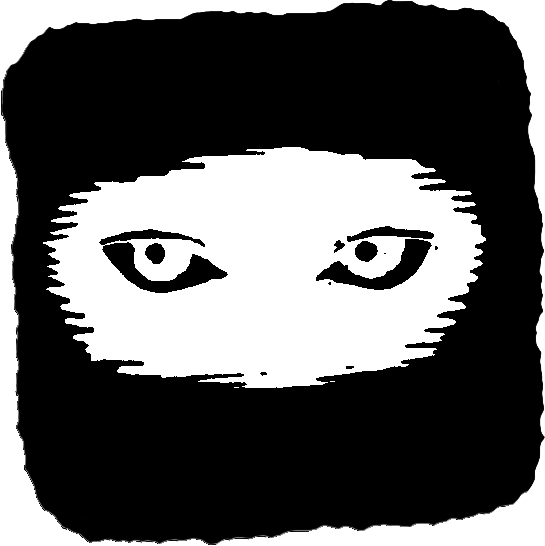
Fenmarel Mestarine
(The Lone Wolf)
Fenmarel Mestarine (FEHN-muh-rehl MESS-tuh-reen) is the eternal outsider, the solitary god who holds himself alof from his fellows. He is venerated by outcasts from elven society, many of whom have withdrawn voluntarily in response to dome percieved slights, as well as by elves who have been isolated from the main body of their race and who live in wild, relatively uncivilised rural groups. Although he does not actively seek the worship of mortals, Fenmarel serves as the teacher and protector of those who turn to him, one who is silent and subtle, instructing his people in survival, spying, camouflage, deception and secrecy.
Fenmarel dislikes the company of other powers, and he avoids relationships of any sort--whether they be alliances or mutual emnities--whenever possible. The Lone Wolf is even somewhat of an outcast among the Seldarine, his nominal allies, although he supports them in their endless war with the Spider Queen and her followers. He has removed himself to Limbo voluntarily, although he has a home in Arvnador when he so chooses. Fenmarel was once Lolth's lover, one of the first to be seduced by her power and promises, but he turned away from her before completely slipping over to the dark side, for which she has never forgiven him. Neither has Fenmarel forgiven Lolth for her breach of faith with the elven race, and thus he hates drow. The Lone Wolf gets along well enough with Solonor Thelandira (said to be his brother) and Shevarash, both of whom join him in actively combating the plots of the Spider Queen and defending the Fair Folk against her depredations. However, Fenmarel's relations with Corellon Larethian are somewhat strained by his perception that the Protector still somehow holds the younger god at fault for succumbing to Lolth's entreaties long ago. Only the kindheartedness of Sehanine Moonbow draws the Lone Wolf back to Arvandor on rare occasions.
Fenmarel is eternally sullen and serious, a perfect counterbalance to fun-loving Erevan Ilesere. He has no interest in communicating with members of other pantheons or N'Tel'Quess unless absolutely necessary, and when he does speak he is usually bitter and cynical. Although he tries to avoid commitments of any sort, the Lone Wolf always abides by his word, no matter how reluctantly it is given. Fenmarel frequently dispatches his avatar to patrol the elven borders in disappearing woodlands, jungles, and similar environments, not unlike Corellon in more sizable homelands.
Back to Top

Hanali Celanil
(The Heart of Gold, Winsome Rose, Archer of Love, Kiss of Romance, Lady Goldheart)
Hanali Celanil (HAN-uh-lee SELL-uh-nihl) is the elven goddess of love, romance, and beauty. Lady Goldheart is predominantly depicted as female, although on rare occasions it is said she has taken male form. Hanali is revered especially by gold elves and moon elves. Her followers also include elven artisans (particularly sculptors), lovers, performers (particularly bards and dancers), and nobles. Lady Goldheart is also widely revered by half-elves born of joyous unions, in honor of the love that brought their parents together. Hanali is closely associated with Evergold, a sacred crystal fountain and pool found within her crystal palace in Arvandor. She keeps watch over her followers by using the placid waters of Evergold as an immense crystal ball, and philters of love created by the elves are said to contain drafts of this fountian's waters.
Hanali is both an aspect of Angharradh and one of the three elven goddesses--the other two being Aerdrie Faenya and Sehanine Moonbow--who collectively form the Triune Goddess. This duality tightly binds Hanali with the two other senior elven goddesses, and the three collectively serve alongside Corellon in leading the Seldarine. Hanali has been romantically involved with nearly every member of the Seldarine, particularly Erevan Ilesere, yet she remains amicable with nearly all of her current and former suitors alike. The only notable exception is Fenmarel Mestarine, although he and Lady Goldheart are still formally allied. The Lone Wolf resents the fact that Hanali spurned him long ago in favor of Erevan Ilesere, and some believe that Hanali's fickleness was what drove Fenmarel into the embrace of Lolth (Araushnee).
Hanali shares the waters of Evergold with the human goddess Sune, as well as the demipower Sharess and several other goddesses of pantheons not worshiped in the Realms. A friendly but intense rivalry exists between Lady Firehair and Lady Goldheart over the innate superiority of human vs. elven beauty. Hanali is close to the human goddess Sharess, particularly in her aspect as Zandilar, as the Dancer was once an elven demigoddess of the Yuir elves whose energy was directed towards passionate, physical love that burns hot and quickly but eventually dies out. While Verenestra (the patron goddess of dryads, nymphs, and sylphs) is rather jealous and snobbishly avoids contact with other goddesses of beauty, love, or romance, Hanali's kind nature and joyous celebration of life have finally won over the Oak Princess, making the two fast friends. Lady Goldheart actively opposes the efforts of those powers who would destroy beauty and love (such as Lolth and Talos) or who nurture bitterness and heartache (such as Shar). Hanali's deep emnity for Eshebala, the Queen of the Foxwomen, is rooted in the latter's exploitation of both beauty and love for her own slef-serving, vain, and hedonistic reasons.
Hanali is a being of timeless beauty and benign nature, who always forgives minor transgressions and delights in rewarding her followers with the bliss of unexpected love and affection. She embodies romance, beauty, love, and joy in elven spirits, her only flaws being her own mild vanity and flighty nature. Although she rarely appears to her faithful, Hanali delights in seeing the growth of love among elves, and her avatar often acts in secret to protect young lovers.
Back to Top
Khalreshaar
Although Khalreshaar (Kal-REH-shay-are) is not listed as an alias of Our Lady of the Forest, Khalreshaar is the name by which Meilikki is known on Evermeet, the Green Isle. In this aspect, Meilikki is said to serve Rillifane Rallathil, not Silvanus, delivering messages and doing errands for the Leaflord when speed is of the essence. While Khalreshaar/Meilikki is in some respects an interloper god in the elven pantheon, the Fair Folk speak of a female human druid who was elevated to the ranks of the divine by the Seldarine when she was slain by soldiers of a human warlord as she attempted to defend elven woodlands from the encroachment of civilization.
Since the Time of Troubles, a growing cult, composed primarily of half-elves, has begun to give more credence to myths which claim that Meilikki is the daughter of Silvanus and Hanali Celanil. They have begun to venerate Khalreshaar as the first truly half-elven power, much to the dismay of many ful-blooded elves.
Back to Top

Labelas Enoreth
(The Lifegiver, Lord of the Continuum, the One-eyed God, the Philosopher, the Sage at Sunset)
Labelas Enoreth (LAH-bay-lahs EHN-or-eth) is the elven god of longevity and time. At the creation of the Fair Folk, Labelas blessed the elves with long lifespans and decreed that their appearances would not be marked by the passage of time. The Lifegiver cooperates with Sehanine in overseeing the lifespan of elves and their growth away from and beyond mortal realms. He measures the lives of the Fair Folk and decrees when they should be ended, allowing passage to Arvandor. As Lord of the Continuum, Labelas govers the orderly passage of time and guards against those who would alter the path of history. Labelas confers wisdom and teachings on young and old alike, and although he is rarely invoked, the Lifegiver is often praised. The Lifegiver knows the fortune and past of every elf, faerie, or sylvan creature. Labelas is worshiped by sages, historians, philosophers, librarians, and all those who measure the shanges wrought by the passing of years.
Labelas has also been venerated in other guises at various places and times in history. When the Sy-Tel'Quessir settled the Yuirwood, the Seldarine merged with the ancient gods of the Yuir, transforming them into aspects of the various powers of the elven pantheon. The Simbul was the Yuir goddess of the moment of choice, the edge, the space between the now and the future, what is and is not, the power of balance embodied in the point of decision where fate is determined intuitively without reason or knowledge. When the Seldarine and the Yuir deities merged, the Simbul had to chose between Labelas Enoreth (the Seldarine power of time and philosophy) and Erevan Ilesere (the elven god of change) to ally with, and eventually she became an aspect of Labelas and then faded into near oblivion. Even the Cha-Tel'Quessir of the Yuirwood have long forgotten this goddess, and the Simbul, Queen of Aglarond, only discovered the divine ancestry of her name in the Year of the Banner (1368DR). Likewise, a long forgotten-aspect of Labelas, known as Chronos, Karonis, or Kronus, was worshiped centuries ago in the tiny realm of Orva, now sunk beneath the waters of the Vast Swamp of eastern Cormyr.
Labelas gets on well with the rest of the Seldarine, although his relationship with Erevan Ilesere is sorely tested by the other's antics on occasion, but the Lifegiver makes allies of few other powers. In ancient times, when Mystryl was venerated as the human goddess of time, Labelas was closely allied with the Lady of Mysteries, and that close relationship has continued with the current incarnation of Mystra. Labelas and the Guardian of the Lost, an aspect of the draconic deity Null also known as Chronepsis, have an understanding, and it is said that Labelas and Shekinester, Queen of the Naga's, are slowly building an alliance. Since the Time of Troubles, Clangeddin Silverbeard, dwarven god of battle and war, has nursed a grudge against Labelas for defeating him in battle on the isle of Ruathym. While the Lifegiver has attempted to appologize for his actions, the Father of Battle is slow to forgive, as is typical of the Stout Folk. The Lifegiver strongly opposes the powers of entropy and undeath, particularly Tenebrous and Yeenoghu.
Labelas is also a philosopher-god, a patient teacher and instructor. His demeanor is clam and meditative, and he is not given to sudden action or hasty speach. According to legend, he traded an eye for the ability to peer through time. Labelas concerns himself with transgressional changes and the growth of learning and wisdom among elves, and thus rarely involves himself directly in the lives of individuals.
Back to Top
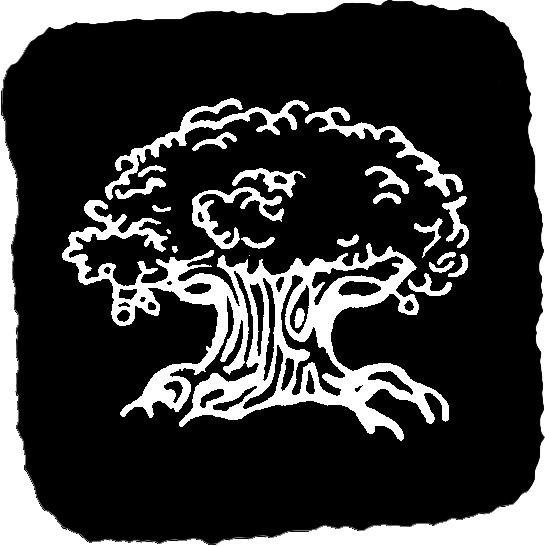
Rillifane Rallathil
(The Leaflord, the Wild One, the great Oak, the Many-Branched, the Many-Limbed, Old Man of the Yuirwood)
Rillifane Rallathil (RILL-ih-fane RALL-uh-thihl) is protector of the woodlands and guardian of the harmony of nature. He is often likened by his priests to a giant etherreal oak tree, so huge that its roots mingle with the roots of every other plant in the Realms, that stands at the heart of Arvandor, the High Forest of Olympus. The great tree draws into itself all the ebb and flow of seasons and lives within the woodlands of the green elves. At the same time, it defends and sustains those lands against disease, predation, and assaults of all kinds. The Leaflord is the patron of the Sy-Tel'Quessir and revered by many voadkyn.
When the Sy-Tel'Quessir settled the Yuirwood, the Seldarine merged with the ancient gods of the Yuir, transforming them into aspects of the various powers of the elven pantheon. Both Magnar the Bear and Relkath of the Infinite Branches, also known as the Many-Limbed, Many-Branched, and the Old Man of the Yuirwood, became aspects of the Leaflord. relkath easily merged with and slowly reinvigorated a primative facet of the Leaflord's nature that had been slowly overshadowed over the ages by the increasingly tamed way of life of the Fair Folk, even among the Sy-Tel'Quessir. As a result of this subtle change of heart, in the centuries since absorbing Relkath, Rillifane's primordial spirit has returned to the fore to great effect. Concurrently, the Sy-Tel'Quessir and Cha-Tel'Quessir (half-elves of the Yuirwood) have rediscovered the ways of their most primative ancestors and reforged their tribal cultures, eschewing the formation of successors to the great green elven civilisations such as Illefarn, Thearnytaar, Eillūr, and Syņrpiir. In contrast to the obvious impact of the absorption of Relkath by the Leaflord, Magnar the Bear was almost totally subsumed after being absorbed, and this aspect of Rillifane is little remembered even among Cha-Tel'Quessir. The half-elves of the Yuirwood speak only of Magnar's Great Sleep, a centuries-long hibernation from which the Bear has yet to emerge.
Much like Ubtao, Ulutia, and Uthgar, Rillifane is served by a host of great spirits including the primeval Bear (comingled with Magnar the Bear by the Cha-Tel'Quessir), Eagle, Raven, and Wolf, among others. These aspects of the Leaflord are recognised only by the Sy-Tel'Quessir and a few Cha-Tel'Quessir and not by the other elven or half-elven subraces. Unlike those other powers' worshipers, however, Rillifane's followers do not venerate any one great spirit exclusively, although they may have done so in the distant past. Instead, the Leaflord's faithful call upon one or more spirits assosiated with their god as appropriate for the situation at hand.
Rillifane is on good terms with all the Seldarine, as well as most sylvan and faerie powers. The Leaflord's primary concern is that all creatures have the oppertunity to act out their roles in nature without abusing them, a concern Rilifane shares with Corellon Larethian, the great creator and protector of the Fair Folk. Solonor Thelandira and Rillifane work together closely to preserve and protect the natural world, but they do differ fundamentally on the issue of hunting. In the spirit of the alliance that binds the Great Archer and the Leaflord, Solonor does not permit his priests and followers to hunt within the woods where Rillifane's brooding, forbidding presence cautions against this, unless their need is great. While Rillifane permits hunting for food by hungry folk, he detests hunting for hunting for sport. Rilifane is closely allied wth Emmantiensien the Treant-King and Silvanus the Oak Father. The trio's conversations are many and seemingly endless to others, as none of the three is given to hasty thought or expression. Rillifane is always a respected guest at the Seelie Court, and aside from Emmantiensien, he is friendliest with Skerrit the Forester and often romantically linked with Verenestra the Oak Princess.
Rillifane is quiet, reflective, and enduring over eons unchanged. He is the least flighty of all the Seldarine, the least likely to act on a whim, and often grave and self-absorbed. The Leaflord rarely sends an avatar to the Prime, disliking direct action and preferring that his priests carry out his wishes. Rillifane's avatar appears only when major destruction of a Tel'Quessir (usually Sy-Tel'Quessir) habitat is threatened. The appearance of such an avatar is heralded by sudden gusts of wind shaking leaves from the trees, a sign unmistakable to his priests.
Back to Top
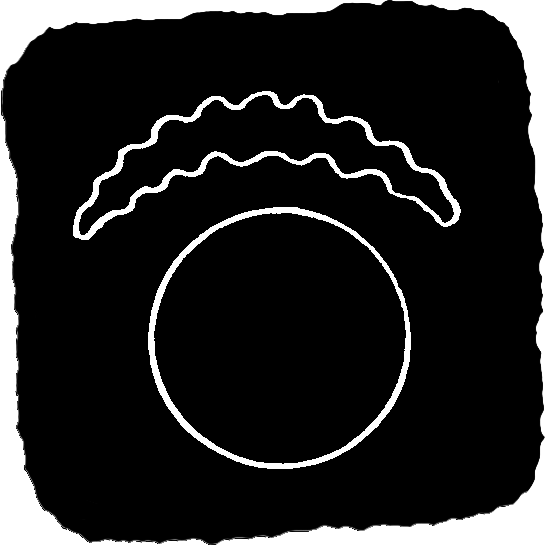
Sehanine Moonbow
(Daughter of the Night Skies, Goddess of Moonlight, the Lunar Lady, Moonlit Mystery, the Mystic Seer, the Luminous Cloud, Lady of Dreams)
Whereas Corellon's symbol is the crescent moon, Sehanine Moonbow (SEH-ha-neen MOON-boe) is the elven goddess of the moon or, more specifically, the full moon. She governs divinations, omens, and subtle magics and protects against madness. She watches over the dreams of the elves, keeping them frm harm while in reverie and sending omens to protect from future dangers. Sehanine watches over the pasage of elven spirits from the world, and she is protectress of the dead. The Daughter of the Night Skies is also guardian and guide to those elves whose days in the mundane world of mortals are done and who seek to travel from the lands they know and love to distant refuges such as Evermeet. She also watches over such refuges and ensures they are kept safe from intrusion. Sehanine governs long journeys, both physical and spiritual, and in elven cultures that proclaim the reality of reincarnation, Sehanine and Corellon work together to guide the spirirt to its best subsequent incarnation as it works its way toward perfection. Although Sehanine is venerated by all the Fair Folk (including half-elves and a handful of gnome illusionists), she is particularly revered by moon elves, who view her as their protectorate, and gold elves, who are among the most withdrawn from the world of all the elven subraces. Tel'Quessir seeking to explore transcendental mysteries, awaiting passage to Evermeet or Arvandor, or undergoing physical or spiritual journeys pray to the Goddess of Moonlight, as do mystics, seers, diviners, and weavers of illusions.
Atlernately called the wife and daughter of Corellon, Sehanine is the mightiest of the female powers in the elven pantheon. Identified with the mystic power of the moon, Sehanine's tears are said to have mingled with Corellon's blood and given life to the elven race. The elves do not forget this. Sehanine is both the primary aspect of Angharradh and one of the elven goddesses--the other two being Aerdrie Faenya and Hanali Celanil--who collectively form the Triune Goddess. This duality tightly binds Sehanine with the other two senior elven goddesses, and the three collectively serve alongside Corellon in leading the Seldarine, just as the Goddess of Moonlight is said to do in other myths. Sehanine has excellent relations with all of the Seldarine, and it is her kind-heartedness that soothes the anger of Shevarash in his darkest fury and her welcoming nature that brings Fenmarel back to Arvandor on occasion. The Luminous Cloud has few strong relationships outside of the Seldarine, for her otherworldliness is beyond even most other deities. Sehanine works closely with Selūne, for the two share similar concerns, and the Goddess of Moonlight is a strong ally of Eilistraee, whom she considers to be an adopted daughter of sorts. Sehanine has also forged alliances with some of the human and demihuman powers who oversee death, but she has no tolerance for those who practice in the black arts of necromancy. (Sehanine does tolerate careful experimentaton in white necromancy, and it is said she vigilantly oversees the creation of balenorn as a necessary, if undesireable, prectice.) Sehanine's antipathy for Lolth has existed since the latter was Araushnee, consort of Corellon and the mastermind who nearly engineered the death of the protector and the defeat of the Seldarine. The Lady of Dreams actively opposes the nefarious schemes of the Spider Queen and the other drow powers. With the rise of humanity and its rapacious expansion into traditional elven homelands, Sehanine has found her energies increasingly occupied by thwarting the destructive ravages of gods such as Auril, Cyric, Malar, Talos, and Umberlee.
Sehanine rarely concerns herself directly with events in the Realms, aside from weaving illusions around secret elven retreats such as Evermeet, Synnoria, Rucien-Xan, and Myth Dyraalis and guiding elves comming into those lands. Her power waxes and wanes with the phases of the moon, growing strongest when the moon is full. As befits the elven goddess of mysteries, Sehanine is cloaked in secrets and illusions and rarely speaks her mind directly, preffering to communicate through a process of dreams, visions, and other mystic experiences. The Goddess of Moonlight is truely spiritual and empheral being evades any attempt to define her and whose serenity surrounds her like a mantle of moondust.
Back to Top
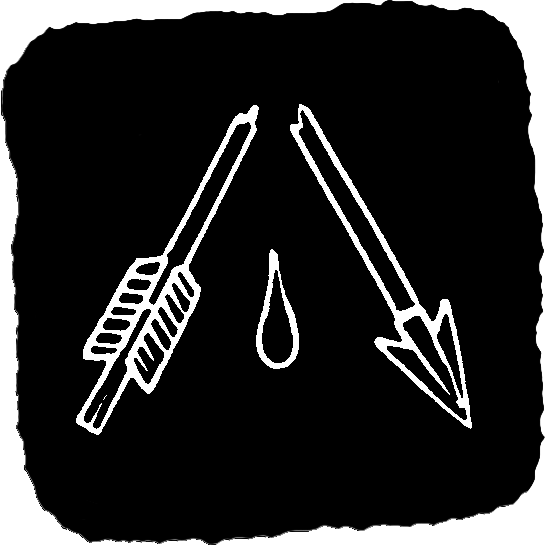
Shevarash
(The Black Archer, the Night Hunter, the Arrow Bringer)
Shevarash (SHEV-uh-rash), who embodies the hatred the Fair Folk hold for the drow, is the elven god of vengeance and military crusades. He is venerated by elves and half-elves who have suffered the loss of loved ones through violence, particularly those who burn with revenge against the drow, and by those who have sworn to destroy the Spider Queen and the other evil gods of the dark elves. Some elven theologians speculate that Shevarash serves to gather in the bitterness and hatred that has riven the elven race since the Crown Wars, thus keeping the contagious evil of the Spider Queen from spreading to the elven population at large.
Nearly 6,000 years ago, circa -4400 DR, on Midwinter night--the longest, darkest night of the year--an army of dueregar and drow poured forth from the Underdark and overran both the dwarven realm of Sarphil on the southern shore of the Moonsea and the Elven Court at the heart of the great forest of Arcorar. The Dark Court Slaughter claimed the lives of countless elves and dwarves, including most of the assembled leaders of the Fair Folk and the Stout Folk who had come to the Elven Court to reestablish their long-standing alliance. Among the fallen was the family of the archer-guard Shevarash, once a carefree hunter of the Elven Court. In an anger-tinged prayer to Corellon, Shevarash vowed to become the Seldarine's hand against the drow to extract revenge for the loss of his family. The grief-stricken warrior swore a grim oath neither to laugh nor smile until the drow goddess Lolth and her foul followers were destroyed. It was a tall order, but for the remainder of his life, Shevarash became the deadliest nemesis of the drow, raiding their underground cities, slaying their priests, and destroying shrines to their foul gods. Shevarash was finally slain by a horde of myrlochar (soul spiders) after killing the high priestess Darthiir'elgg Aleanrahel and six of her consorts, circa -4070 DR. Upon his death and with the assistance of Fenmarel Mestarine, Shevarash the Black Archer underwent apotheosis to become the Night Hunter and the Arrow Bringer.
When the Sy-Tel'Quessir settled the Yuirwood, the Seldarine merged with the ancient gods of the Yuir, transforming them into aspects of the various powers of the elven pantheon. Of the Seldarine, Shevarash absorbed the aspect of Elikarashae, the youngest of the Yuir gods, as Elikarashae had only recently undergone apotheosis. The Sy-Tel'Quessir settlers of the Yuirwood incorporated the legends of Elikarashae into their own myths of Shevarash, and in the folklore of the elves of the Yuirwood, the god's aspects as Elikarashae became a mighty elven warrior who bore three great weapons: the spear Shama, which could speak to elf warriors of pure heart and noble mind; the sling Ukava, which never missed; and the club Maelat, which could only be weilded in the defense of the Yuir. Elikarashae was credited with defeating many of the Yuir's enemies, particularly the mountain trolls and drow, for which the great warrior had been lifted up to Arvandor and made a god, or so the myths held.
Shevarash maintains no permanent realm in the Outer Planes, although he visits both Arvandor and fennimar frequently. The Black Archer is closely allied with the Seldarine, particularly the more militant powers, although none of the elven gods are as consumed with hatred and vengeance as he is. Although Shevarash considers Fenmarel his superior, the Lone Wolf and the Black Archer share little in common aside from their mutual hatred of the drow. Of the rest of the Seldarine, Shevarash works closely with Corellon and Solonor in particular, but the other two powers are more concerned with defending the elven realms than bringing war into the tunnels of the drow, much to the Black Arsher's frustration. As consumed by his hatred of the dark elven powers now as he was during the night of the Dark Court Slaughter, the Black Archer now hunts Lolth, Ghaunadaur, Vhaeraun and the other dark gods of the drow directly, often venturing into the Abyss to do so. Shevarash has moderated his hatred toward Eilistraee and the good-aligned drow who worship the Dark Maiden. He does not kill them out of hand, but he still dislikes them thoroughly. In life, the Black Archer's extended forays into the Underdark nurtured his antipathy for the other evil denizens of the Night Below, and as a god he battles their divine patrons as well. Shevarash's all-consuming crusade is such that the only long-standing divine allies he has garnered since his apotheosis are those such as Callarduran Smoothhands and Psilofyr who share his hatred of the drow and their pantheon of dark gods. As humanity has begun to venture even deeper into the Underdark, Shevarash has begun to work more with human gods such as Shaundakul and Hoar. To the great distress of the other members of the Seldarine, the Black Archer's bitterness is such that he has recently begun to find solace in the soothing embrace of Shar.
Shevarash is taciturn, violent, and consumed by thoughts of bitterness and revenge. He never displays any emotion aside from anger and a brief exultation of triumph after each victory. The Black Archer has no patience for those who do not share his zeal for vengeance, and he has no interest in moderating his crusade in the interests of peace. The Black Archer dispatches his avatar in anticipation of an attack by drow on a relatively undefended elven settlement, or if he appears too late to prevent a repeat of the slaughter that still haunts him, Shevarash pursues the dark elves back into the Underdark and hunts them down until all are dead.
Back to Top
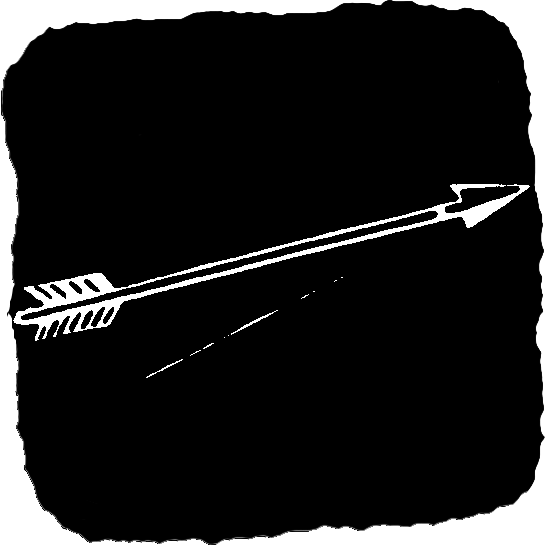
Solonor Thelandira
(Keen-Eye, the Great Archer, the Forest Hunter)
Solonor Thelandira (SOE-loe-nohr Theh-LAN-dih-ruh) is the elven god of hunting, archery, and survival in wild and harsh places. The Great Archer's prowess with the bow is unmatched by any other power venerated in the Realms. Solonor is concerned with the integrity of nature and the balance between exploitation and agriculture on one hand and fallow, wild terrains on the other. Like Corellon Larethian and Fenmarel Mestarine, the Great Archer watches over the boundaries of elven lands. He instructs the Fair Folk in the art of hiding in and moving through natural foliage so as to not be detected as well as the art of archery and hunting. Solonor is primarily revered by elven and half-elven rangers, hunters, woodsmen, and fighters. In particular, elven hunters appeal to him for better catches of game and elven warriors trapped in hostile territory call on him for aid. In recent centuries a few humans, primarily hunters, have joined his faith as well.
Solonor is allied with all the powers who collectively compose the Seldarine. In particular, the Great Archer works closely with Corellon Larethian, Fenmarel Mestarine, and Shevarash to defend the borders of elven homelands. In many tales, Fenmarel is said to be the brother of Solonor, and despite the former's estrangement from the Seldarine for which Solonor holds Lolth responsible, the Lone Wolf and the Great Archer are still close allies. Solonor has served as Shevarash's mentor since the green elf's apotheosis, and the two are united in their hatred of the Spider Queen and her followers, the drow, although the Great Archer is not as consumed with vengeance as the Night Hunter. Solonor and Rillifane Rallathil work closely to preserve and protect the natural world. Althought the Great Archer is more tolerant of the slow growth of civilization than the Leaflord, a philosophical difference that sometimes spills over into the relations between their two faiths, they are united in their efforts to preserve the great forests of the Fair Folk from the relentless expansion of humankind. Solonor and Eilistraee are true kindred spirits, with some myths depicting them as half-siblings and other myths suggesting a bugeoning romantic relationship (much to the dismay of both Shevarash and Fenmarel). Among the nonelven powers, Solonor is closely allied with other powers concerned with the natural world, including Mielikki, Lady of Forests, another goddess with which he has been romantically linked, Silvanus the Oakfather, Skerrit the Forester, and the various Animal Lords, particularly those concerned with hunting such as the Cat Lord and Wolf Lord. Solonor despises powers that favor despoliation over nature, and actively opposes the efforts of such gods and their followers. Solonor's greatest foes are Malar and Talos, followed closely by Lolth and members of the Unseelie Court. The Beastlord's eternal, unquenchable bloodlust is a vile perversion of every principle Solonor holds dear. Likewise, the Destroyer's hunger for destruction works to tear apart the delicate balance the Great Archer has striven to forge and maintain. The Queen of Air and Darkness, much like the Spider Queen, embodies the corruption that can take root in the hearts of even those of fey ancestry and against which the Great Archer stands ever vigilant.
Solonor is always in pursuit of quarry, and he rarely remains in one location for very long. Unlike many hunters, the Great Archer stalks prey only out of concern for the overall balance between species and to destroy evil-doers, particularly the drow. His serious, sometimes grim, demeanor reflects the difficulty he faces in forging a workable compromise between the competing forces of civilization and wilderness, instinct and knowledge, and savagery and domesticity. Solonor's word is his bond, and his pledge is never given lightly. Solonor does not close to do battle with an enemy, but tracks and pursues instead, firing arrows from a never-empty quiver. The favorite tactic of this deity, should he anticipate battling a particularly dangerous foe, is to physically touch that being and then retreat. Once by himself again, he can then manufacture a special arrow of slaying designed especially to kill that one opponent, should it strike home. He then hunts his quarry relentlessly, hoping to bring him down in a single shot. Many fiends from the Lower Planes have felt the bite of Solonor's deadly arrows.
Back to Top
Demihuman Deities © 1998 Wizards of the coast
Back to Info











